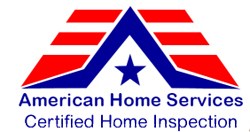 Learn about Fire Safety from Orlando Home Inspector
Learn about Fire Safety from Orlando Home Inspector
Think of all the items you replace regularly – your cellphone, lightbulbs and even your toothbrush. But when was the last time you replaced your smoke alarm batteries, or even the alarms themselves? It’s easy to overlook, but the time to think about fire safety is now – before an emergency strikes.
Many assume that because they have smoke alarms in their homes, they’re protected in the event of a fire. In reality, smoke alarms need to be installed, maintained and tested regularly to ensure they’re working properly. That effort includes knowing how old smoke alarms and their batteries are, as neither lasts forever. While smoke alarm lifespan and sensing technology have improved in recent years, the fact remains that all smoke alarms – even hardwired and sealed battery models – expire after 10 years.
“According to the National Fire Protection Association (www.nfpa.org), three out of five home fire deaths occur in homes without smoke alarms or from missing or dead batteries,” said Tarsila Wey, director of marketing for First Alert. “Just like other household duties, it’s important to make sure alarm maintenance and replacement and escape planning and practice become a regular, ongoing part of your family’s routine.”
First Alert offers the following advice to ensure your family is best protected from fire.
Count the alarms
In most cases, one alarm isn’t enough. In fact, the U.S. Fire Administration (USFA), recommends smoke alarms be installed inside every bedroom, outside each sleeping area and on every level of the home, including the basement, as well as one carbon monoxide (CO) alarm on each level and in each sleeping area. A quick and easy way to remember is one on every level and in every bedroom.
Install them properly
Does your alarm ever sound when cooking? Chances are, you’ve installed the alarm too close to your appliances. An easy way to reduce false alarms and maximize coverage is to take a moment to review manufacturer guidelines and install alarms in the proper locations. Smoke alarms should generally be installed at least 10 feet from a cooking appliance to minimize false alarms. It’s also recommended to install smoke alarms high on walls or ceilings. Remember, smoke rises, so high placement provides a direct path for detection. Lastly, don’t install smoke alarms near windows, doors or ducts, where drafts might interfere with their operation.
Get complete coverage
In general, there are two types of fires – quick flaming and smoldering. Today’s smoke alarms are effective at detecting both but use unique technologies that make them better suited for particular locations within the home. The NFPA and other safety advocates recommend installing dual-sensor alarms like the First Alert 10-Year Battery Dual Sensor Alarm because they provide the best potential for early detection of all types of common household fires while helping to reduce the number of non-emergency alarms – all while providing a decade of protection without the need for costly and ongoing battery replacement.
Install and maintain
Having smoke alarms is only one part of the story. In order to function properly, all alarms must be regularly inspected and maintained. Make sure to test the alarm, by simply holding down the test button, at least once a month. Also, when testing, it’s important to clean the alarm to remove any dust or debris. This advice holds true even for newer alarms, which feature 10-year batteries, as well as hardwired alarms that feature a battery back-up. Check or replace the battery when you change the time on your clocks each spring and fall.
Plan your escape
Maintaining alarms is essential to every household, but what about your escape route? Unfortunately, recent research indicates that just 25 percent of families have an escape plan that they practice regularly. To develop an effective plan, walk through your home and inspect all possible exits and escape routes. Identify two ways out of each room, including windows and doors. Practice your home fire escape plan at least twice a year and make sure to plan a meeting spot. (BPT)
For more fire safety tips, visit www.firstalert.com.


 Learn about Fire Safety from Orlando Home Inspector
Learn about Fire Safety from Orlando Home Inspector